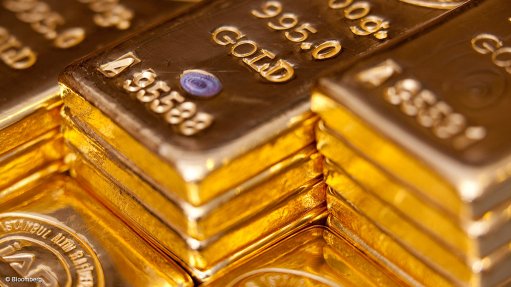
Amid the prevailing gloom about prospects for the gold price, the latest GFMS Gold Survey forecasts an average price of $1 135/oz for the third quarter of 2015, which it also describes as “the nadir”, before a recovery to an average price of $1 175/oz for the fourth quarter.
The second quarter survey, published by Thomson Reuters, also predicted an annual average gold price of $1 180/oz for the year as a whole, which was $10/oz higher than the GFMS’s previous forecast.
“Price strength is forecast to continue in our base case with 2016 averaging $1 250/oz,” the GFMS stated.
Gold was trading at around five-year lows of 1 095/oz as the report was released, having traded at close to $1 300/oz in late January, before slumping to below $1 080/oz during trade on July 24.
The GFMS forecast came amid a slew of negative pricing news for the precious metal, with some analysts warning that the gold price could retreat to below the $1 000/oz level.
Banking group HSBC recently lowered its 2015 average annual price forecast to $1 160/oz from $1 234/oz for 2015, while reducing its outlook for 2016 to $1 205/oz, from $1 275/oz.
The GFMS’s own report noted that physical gold demand was at its weakest since 2009 in the second quarter, with physical demand falling 14% year-on-year as Chinese buyers stayed away.
“Almost all major physical gold markets suffered in the second quarter as retail investment (demand for bars and coins) fell another 12% year-on-year and is now some 63% below the second quarter of 2013 peak.”
Jewellery production declined by 6% year-on-year while consumption was down by 9%, despite a 7.5% fall in average US dollar gold prices during the quarter.
India reclaimed the top spot with regards to total gold consumption in the second quarter, but China narrowly edged out India for the first half of the year, with 394 t as opposed to India’s 392 t.
There had been a small fall in total new supply to the market in the second quarter, but that the 14% decline in physical demand led to a 196 t surplus during the period, the highest since 2010.
The 7.5% US dollar price decline had little impact on offtake, while institutional investor interest in gold had remained in the “doldrums”.
“It remains our view that a US rate hike this year is already priced into the market and that an increase could well prompt a review of asset allocations that leads to an increase in gold holdings,” the GFMS concluded.